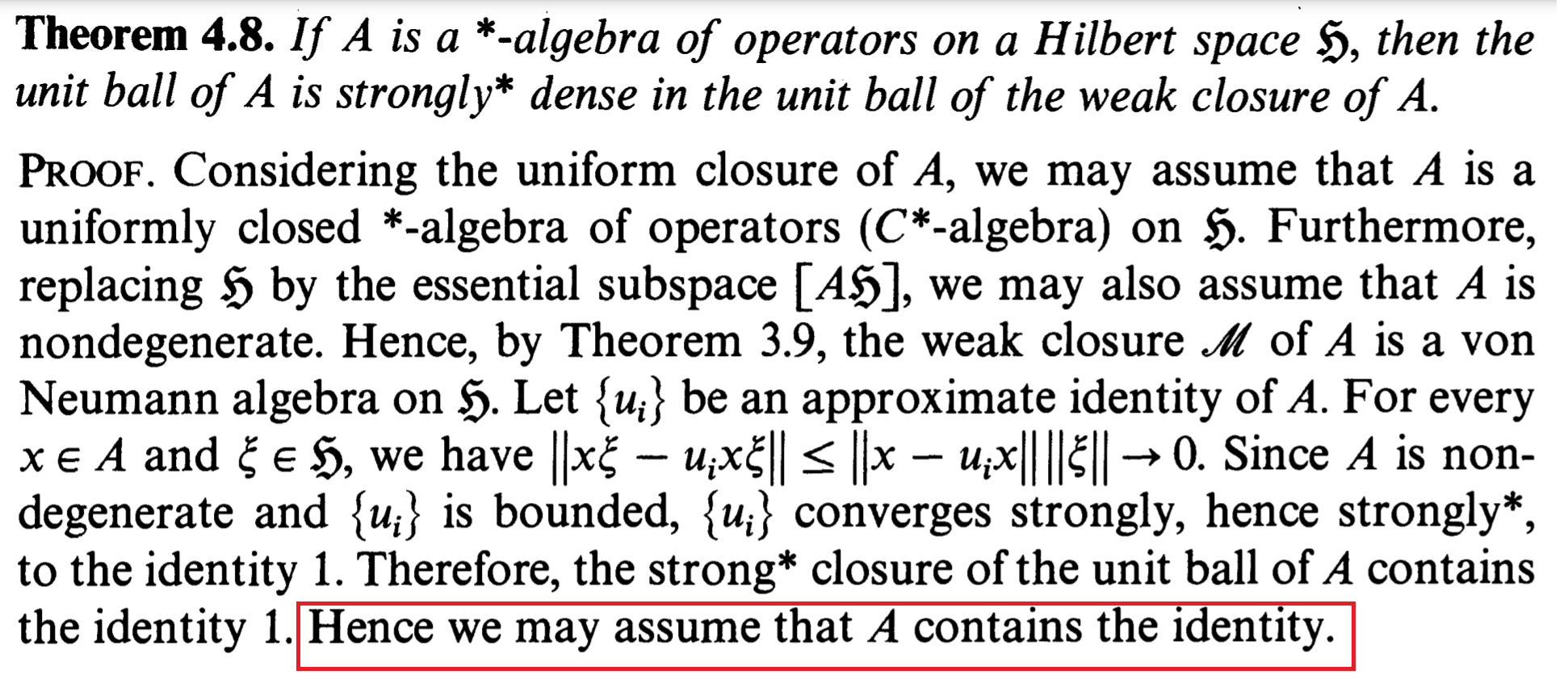No, it is not the case that $A$ is being replaced by its strong closure.
That paragraph performs a whole series of reductions:
- We may assume that $A$ is norm closed (i.e. is a $C^*$-algebra)
- We may assume that $A$ acts non-degenerately, so the weak closure of $A$, say $M$, is a unital (so is a von Neumann algebra).
Next, it is proved that:
- the strong$^*$-closure of the unit ball of $A$ contains the identity operator $1$.
We are trying to prove that the unit ball of $A$ is strong$^*$-dense in the unit ball of $M$. Let $X$ be the strong$^*$-closure of the unit ball of $A$, let $A_1$ be the unitisation of $A$ (so the linear span of $A$ and $1$) and let $X_1$ be the strong$^*$-closure of the unit ball of $A_1$. So by definition, $X\subseteq X_1$. (We know that $1 \in X$, but I cannot see how to directly use this.)
Let $x = 1+a\in A_1$ with $\|x\|\leq 1$. As in the paragraph, let $(u_i)$ be an approximate identity for $A$, so we know that $(u_i)\rightarrow 1$ strong$^*$. For $\xi\in H$,
$$ \| u_ix\xi - x\xi\| \rightarrow 0 \quad\implies\quad \|(u_i+u_ia)\xi - x\xi\|\rightarrow 0, $$
and
$$ \| (u_i+u_ia)^*\xi - x^*\xi\| = \|x^*(u_i\xi-\xi)\|\leq \|x\| \|u_i\xi-\xi\|\rightarrow 0, $$
and so $(u_i + u_ia) \rightarrow x$ strong$^*$. As $\|u_i+u_ia\| \leq \|x\| \leq 1$, it follows that $x\in X$. So the unit ball of $A_1$ is contained in $X$ and hence taking strong$^*$-closures shows that $X = X_1$.
Hence, $X$ equals the ball of $M$ if and only if $X_1$ equals the ball of $M$, and so we can (without loss of generality) replace $A$ by $A_1$, and so we may assume that $A$ is unital.

